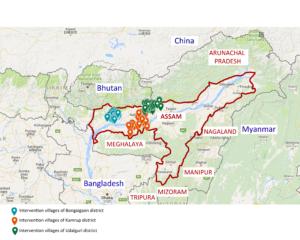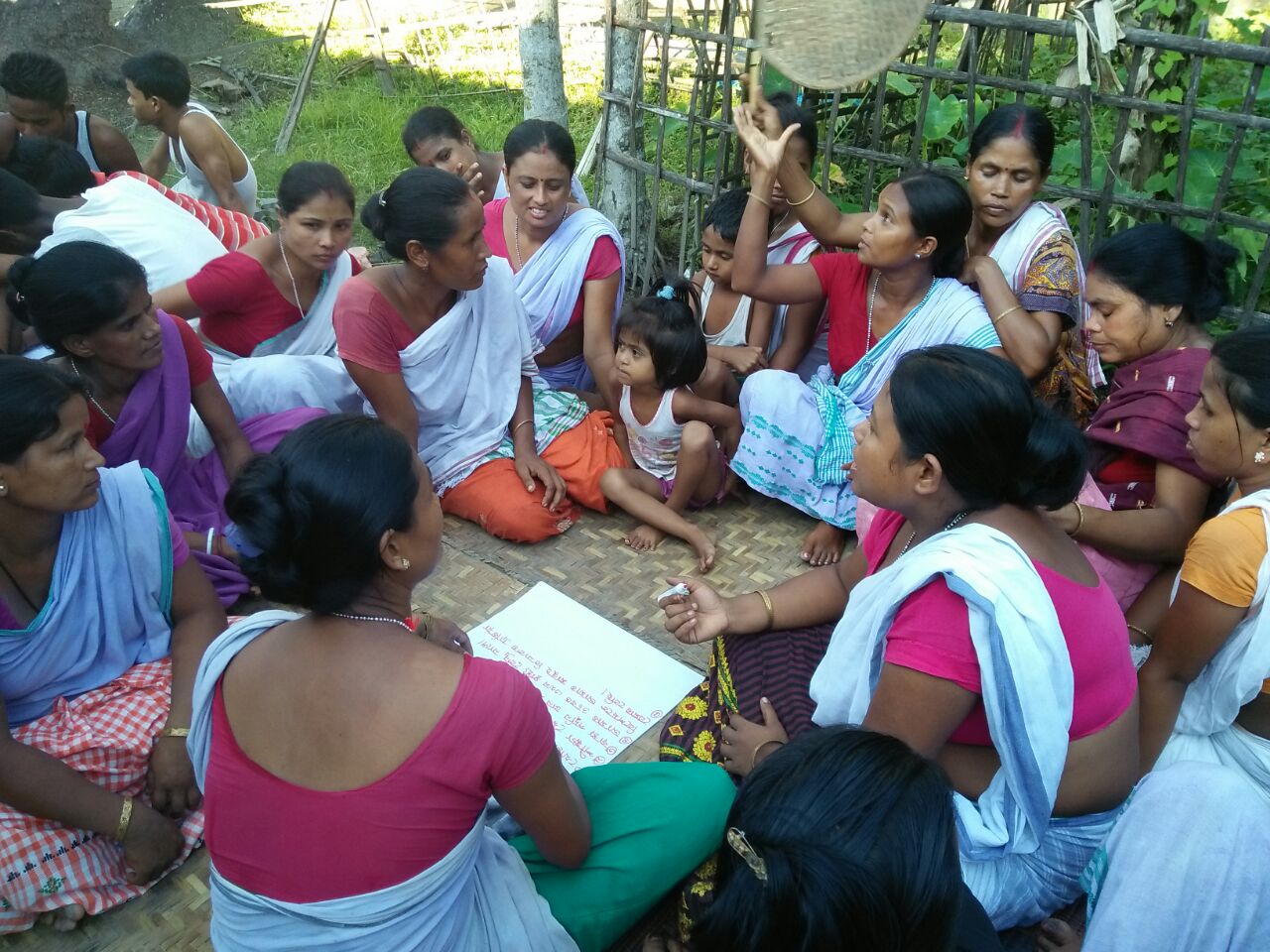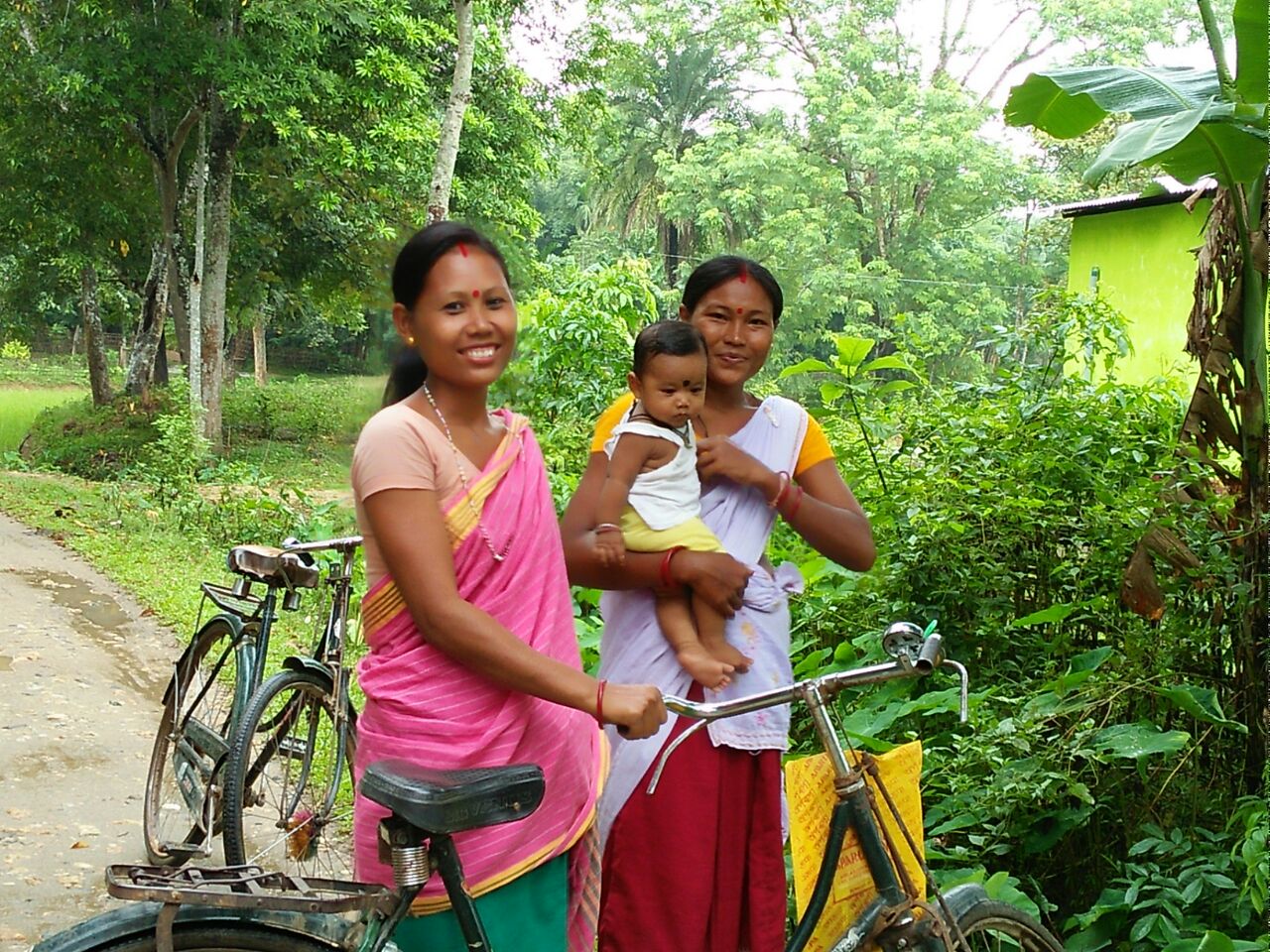The SALT project in Assam took place in 3 phases between April 2017 and April 2020. During the project, the SALT approach was introduced to 90 communities in Assam: 30 communities in Bongaigaon, 30 communities in Udalguri and 30 communities in Kamrup. The work in Bongaigaon was carried out by facilitators from the Voluntary Health Association of Assam (VHAA) and the work in Udalguri and Kamrup was carried out by facilitators from the Centre of North East Studies and Policy Research (C-NES).

Intervention villages Assam. By PHFI.
Phase 1 (April 2017 to April 2018) was funded by the International Initiative for Impact Evaluation (3ie). The objective of the 3ie programme was to generate new evidence about what works to engage communities to increase immunisation coverage. The objective of the project was to test the effectiveness of the SALT approach in increasing the take-up of immunisation in Assam, India. An Impact Evaluation of the programme was carried out by the Public Health Foundation of India (PHFI). The evaluation showed that the intervention had an insignificant impact on the uptake of immunisation in the 90 villages that were the target of the intervention.
Phase 2 (May 2018 to May 2019) was funded by the Trust for Local Response. The same 90 villages in the 3 districts of Assam were covered. However, the communities were encouraged to identify the issues that were important to them and to define action plans based on their own priorities and schedules. In this sense, Phase 2 was a normal The Constellation project.
During Phase 3 (May 2019 to May 2020), a lower level of facilitation support was provided to 30 of the original 90 communities (Ten communities were selected from each of the three districts). In addition, the results of the entire project were evaluated with Outcome Harvesting methodology.
The major lessons from Phase 1 of the Assam Project
The most profound learning to come from the Assam project for the SALT approach is that it brings an inevitable tension when the external objective (increasing the level of immunisation) does not have an equal priority with the community that is being invited to own that objective. We recognised this tension from the outset of the project. However, we rationalised that if we framed the project as being about ‘Healthy Children’ then we could square this circle. With some communities this worked out, but in many others, it was always clear that immunisation was never going to be a high priority for them. We saw the tensions throughout the project in a wide variety of ways. There is a real doubt in our minds as to whether our methodology was suited to the objective.
The second lesson is related to the first: The communities own the timing of the project—we do not. The external owner (3ie) of the project defined the period of the intervention (12 months). However, the communities have their own rhythms and these are the real drivers of the timing of their programme. There are periods of the agricultural cycle where the community cannot and will not engage. Assam has a wonderful collection of festivals that are of the utmost importance. And more tragically when the Brahmaputra River floods, the priority is survival. The project simply must adapt to these ebbs and flows, but there is a pressure to deliver to a schedule that inevitably leads to a box ticking approach that is inconsistent with the development of ownership by the community.

Villagers in Uttar Bordol discuss the dream for their village.
Phase Two of the Assam Project
As we reached the end of Phase 1 of the project, we sensed that we were leaving with our work incomplete. We saw the facilitators’ skills and confidence growing rapidly and we saw the communities understanding that they could take action. We decided to raise funds to continue the intervention for a further year using the same facilitation resources. We returned to our usual way of working in that the community identified the issues that were important to them and defined action plans based on their own priorities. We were pleased, and relieved, to see a flowering of activities. Some communities continued to prioritise immunisation, while for others it was not an issue of importance. In this environment, The Constellation and the facilitators were far more comfortable.
Phase Three of the Assam Project
During Phase Three, we evaluated the results with Outcome Harvesting methodology. This evaluation observed some of the behaviour changes over a much broader area than immunisation coverage that we had hoped to see. Here are some quotations from a preliminary report of the study.
“The project showed a clear effect on various tangible issues, primarily water cleanliness, cleanliness and sanitation, immunization, nutrition, quality of education, and school dropout. While immunization was the main entry point for the project to address issues in the villages, it clearly also was able to raise awareness of a few other issues.”
“(One) strength of the approach is that it enables villages to create a linkage to existing schemes. In Kamrup, for example, a village was able to connect the school to the public water supply in order to ensure safe drinking water. In other villages, the community leaders had started to contact the government regarding the construction of public roads.”
“As the selection of villages undermined the effectiveness of the project significantly, any follow up should consider addressing clusters of villages. It should further strengthen the spillover effects on neighbouring villages, possibly by actively encouraging outreach to neighbouring villages…..The utility of the project to instil and sustain behavioural changes is striking and unprecedented. While this effect cannot be measured in numbers, it becomes visible when young girls take the floor in front of the whole community or when fathers take their children to the vaccination appointments.”
The work on the Outcome Harvesting continues.
Conclusion
In one sense, the Assam Project as it was originally conceived was a failure. We were not able to demonstrate that communities would increase their take-up of immunisation within a 12 month period using the SALT approach. However, the 3 years of supporting facilitators and communities in Assam has provided us with a treasure trove of learning. Perhaps the most enduring insight is that our approach is owned by the facilitators who accompany the communities and the communities themselves. They take time to understand it and to internalise it. But the result is well worth waiting for.
The ownership shown by facilitators and communities leads to dramatic changes.

Batabari, Udalguri – Villagers clean up, as one action towards a healthy and happy village.
- Text and pictures: Philip Forth
- Project: ‘Healthy Children in 90 villages, Assam’
- Period: 2017-2020
- The Constellation Team: Rituu B. Nanda, Philip Forth, Luc Barrière-Constantin, Bobby Zachariah, Marlou de Rouw, Jean-Louis Lamboray, Ian Campbell, Dolores Rey-Novoa.
- Local Partners: VHAA and C-NES
- Evaluation Phase 1: PHFI
- Outcome Harvesting: Michael Steffens and Rituu B. Nanda
- Donors: Trust for Local Response and International Initiative for Impact Evaluation (3ie)

